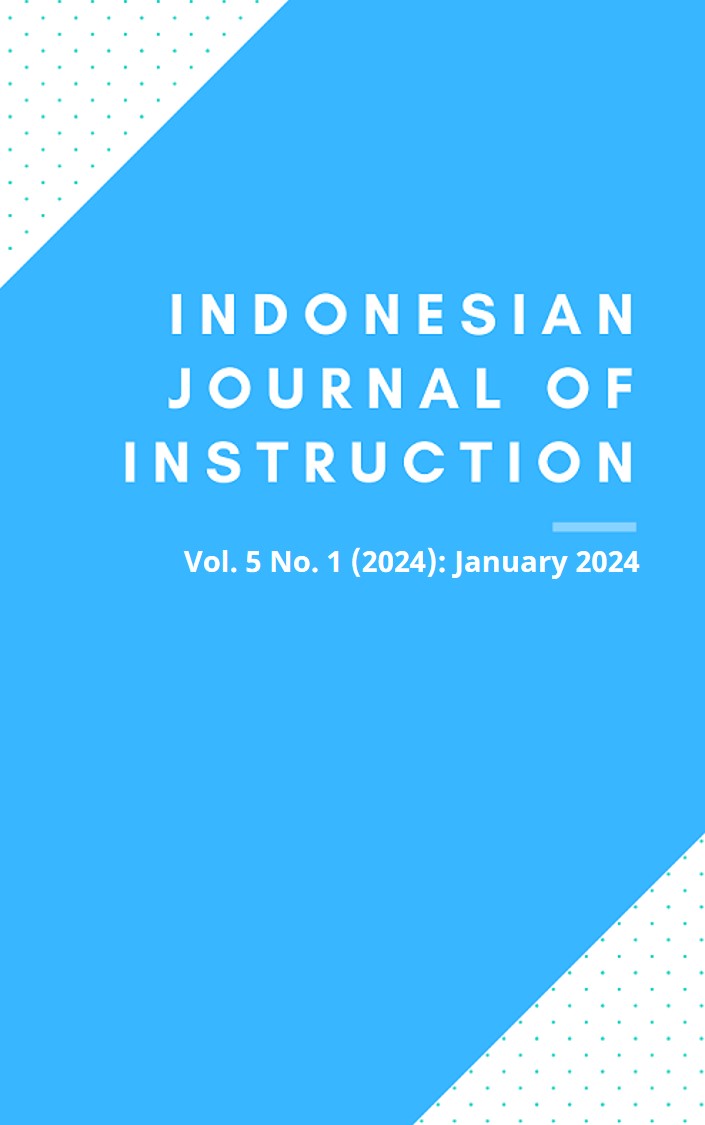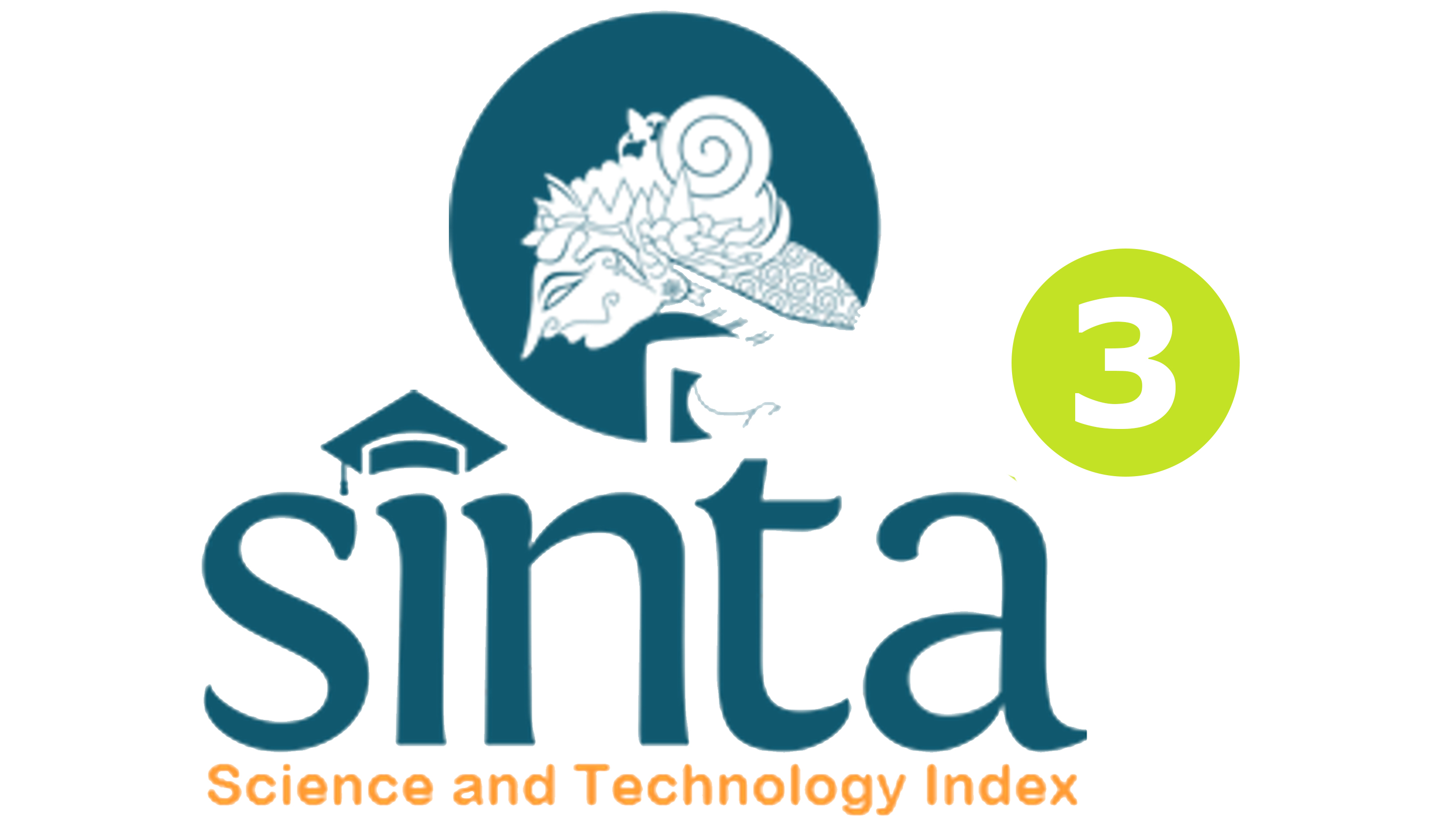Game-Changer Using Dick and Carey Model in Enhancing Academic Achievement through Effective Instructional Strategies
DOI:
https://doi.org/10.23887/iji.v5i1.69298Keywords:
Dick and Carey Model, Instructional Strategies, Academic AchievementAbstract
Based on the results of interviews and observations carried out at school, it shows that the cognitive science learning outcomes of fifth grade elementary school students are still low. This research aims to analyze the significant influence of the discovery learning learning model assisted by mind mapping media on the cognitive science learning outcomes of fifth grade elementary school students. This research uses a quasi-experimental design with a non-equivalent control group design. The research population is 186 students, the sample determination will be random, and the experimental and control classes will be given a pretest and then equalized using the ANOVA test. The data collection method in this research is a test method, namely an objective test. There are two data analysis techniques in this research, namely descriptive statistical analysis and inferential statistical analysis. It is known that the t-calculated value of 24.448 is greater than the t-table of 1,681. This value shows that there is a significant influence of the discovery learning model assisted by mind mapping media on the cognitive science learning outcomes of fifth grade elementary school students. The practical implications of this research can be used by teachers as a reference in improving student learning outcomes.
References
Afacan Adanır, G., Muhametjanova, G., Çelikbağ, M. A., Omuraliev, A., & İsmailova, R. (2020). Learners’ preferences for online resources, activities, and communication tools: A comparative study of Turkey and Kyrgyzstan. E-Learning and Digital Media, 17(2), 148–166. https://doi.org/10.1177/2042753019899713. DOI: https://doi.org/10.1177/2042753019899713
Aji, W. N. (2016). Model Pembelajaran Dick and Carrey Dalam Pembelajaran Bahasa Dan Sastra Indonesia. Kajian Linguistik Dan Sastra, 1(2), 119. https://doi.org/10.23917/kls.v1i2.3631. DOI: https://doi.org/10.23917/kls.v1i2.3631
Akomaning, E. (2019). Improving student internship through collaborative curriculum design: Needs and context analysis to inform the design process. In Collaborative Curriculum Design for Sustainable Innovation and Teacher Learning. https://doi.org/10.1007/978-3-030-20062-6_6. DOI: https://doi.org/10.1007/978-3-030-20062-6_6
Barzegar, R., Asghari Moghaddam, A., & Tziritis, E. (2016). Assessing the hydrogeochemistry and water quality of the Aji-Chay River, northwest of Iran. Environmental Earth Sciences, 75(23). https://doi.org/10.1007/s12665-016-6302-1. DOI: https://doi.org/10.1007/s12665-016-6302-1
Bell, R., & Bell, H. (2020). Applying educational theory to develop a framework to support the delivery of experiential entrepreneurship education. Journal of Small Business and Enterprise Development, 27(6), 987–1004. https://doi.org/10.1108/JSBED-01-2020-0012. DOI: https://doi.org/10.1108/JSBED-01-2020-0012
Bennett, R. E. (2011). Formative assessment: A critical review. Assessment in Education: Principles, Policy and Practice, 18(1), 5–25. https://doi.org/10.1080/0969594X.2010.513678. DOI: https://doi.org/10.1080/0969594X.2010.513678
Cairncross, S., & Mannion, M. (2001). Interactive multimedia and learning: Realizing the benefits. Innovations in Education and Teaching International, 38(2), 156–164. https://doi.org/10.1080/14703290110035428. DOI: https://doi.org/10.1080/14703290110035428
Childs, E., Mohammad, F., Stevens, L., Burbelo, H., Awoke, A., Rewkowski, N., & Manocha, D. (2023). An Overview of Enhancing Distance Learning Through Emerging Augmented and Virtual Reality Technologies. IEEE Transactions on Visualization and Computer Graphics. https://doi.org/10.1109/TVCG.2023.3264577. DOI: https://doi.org/10.1109/TVCG.2023.3264577
Darling-Hammond, L., & Snyder, J. (2000). Authentic assessment of teaching in context. Teaching and Teacher Education, 16(5), 523–545. https://doi.org/10.1016/S0742-051X(00)00015-9. DOI: https://doi.org/10.1016/S0742-051X(00)00015-9
Dick, W., Carey, L., & Carey, J. O. (1996). The Systematic Design of Instruction. Educational Technology Research and Development, 54(4), 417–420. https://doi.org/10.1007/s11423-006-9606-0. DOI: https://doi.org/10.1007/s11423-006-9606-0
Dikmen, C. H. (2019). The Effect of Web-Based Instruction Designed by Dick and Carey Model on Academic Achievement, Attitude and Motivation of Students’ in Science Education. Journal of Learning and Teaching in Digital Age, 4(1), 34–40. https://dergipark.org.tr/en/pub/joltida/issue/55473/760109.
Faryadi, Q. (2012). Effective Teaching and Effective Learning : Instructional Design Perspective. International Journal of Engineering Research and Applications, 2(1), 222–228. http://dr-qais.com/Qais%20Journal/Effective%20Teaching.pdf.
Fradd, S. H., Lee, O., Sutman, F. X., & Saxton, M. K. (2001). Promoting science literacy with english language learners through instructional materials development: A case study. Bilingual Research Journal, 25(4), 479–501. https://doi.org/10.1080/15235882.2001.11074464. DOI: https://doi.org/10.1080/15235882.2001.11074464
Freeman, S., Eddy, S. L., McDonough, M., Smith, M. K., Okoroafor, N., Jordt, H., & Wenderoth, M. P. (2014). Active learning increases student performance in science, engineering, and mathematics. Proceedings of the National Academy of Sciences of the United States of America, 111(23), 8410–8415. https://doi.org/10.1073/pnas.1319030111. DOI: https://doi.org/10.1073/pnas.1319030111
Khalil, M. K., & Elkhider, I. A. (2016). Applying learning theories and instructional design models for effective instruction. Advances in Physiology Education, 40(2), 147–156. https://doi.org/10.1152/advan.00138.2015. DOI: https://doi.org/10.1152/advan.00138.2015
Kim, J. S., Burkhauser, M. A., Mesite, L. M., Asher, C. A., Relyea, J. E., Fitzgerald, J., & Elmore, J. (2021). Improving reading comprehension, science domain knowledge, and reading engagement through a first-grade content literacy intervention. Journal of Educational Psychology, 113(1), 3–26. https://doi.org/10.1037/edu0000465. DOI: https://doi.org/10.1037/edu0000465
Kirschner, F., Kester, L., & Corbalan, G. (2011). Cognitive load theory and multimedia learning, task characteristics and learning engagement: The Current State of the Art. Computers in Human Behavior, 27(1), 1–4. https://doi.org/10.1016/j.chb.2010.05.003. DOI: https://doi.org/10.1016/j.chb.2010.05.003
Konczak, L. J., Smith, D. E., Brumback, G. B., Buenger, V., Craig, S. B., Fink, A., Fleenor, J. W., Jones, R. G., Levy‐Leboyer, C., Macan, T., Ree, M. J., & Thayer, P. W. (2011). Retooling HR: Using Proven Business Tools to Make Better Decisions About Talent by John W. Boudreau. Personnel Psychology, 64(2), 529–531. https://doi.org/10.1111/j.1744-6570.2011.01217_1.x. DOI: https://doi.org/10.1111/j.1744-6570.2011.01217_1.x
Lewis, J. (2023). Instructional Design And Autism Evidence-Based Practices : The Dick And Carey Model . Prorequest.
Manurung, D., Siagian, P., & Minarni, A. (2020). The Development of Realistic Mathematics Education Based Learning Tools to Improve Mathematical Problem Solving Ability and Self-Efficacy on Students in Junior High School 1 Lubuk Pakam. Budapest International Research and Critics in Linguistics and Education (BirLE) Journal, 3(1), 107–118. https://doi.org/10.33258/birle.v3i1.762. DOI: https://doi.org/10.33258/birle.v3i1.762
Marzano, R. J., Pickering, D., & McTighe, J. (1993). Assessing Student Outcomes: Performance Assessment Using the Dimensions of Learning Model. https://eric.ed.gov/?id=ED461665.
Moore, M. G., & G.Anderson, W. (2003). A Theory of Critical Inquiry in Online Distance Education. In Lawrence Erlbaum Associates, Inc. http://doi.wiley.com/10.1111/j.1467-8535.2004.00409_10.x%0A.
Morrison, G. R. (Professor), Ross, S. M., & Kemp, J. E. (2006). Designing Effective Instruction. 5th Edition. Jossey-Bass, An Imprint of Wiley, 441.
Naqsyabandiyah, N., & Dehghanitafti, N. (2023). Developing Task-Based Learning Materials to Improve Students’ Vocabulary Mastery Viewed from Linguistic Awareness. Journal of Language and Literature Studies, 3(1), 37–52. https://doi.org/10.36312/jolls.v3i1.1088. DOI: https://doi.org/10.36312/jolls.v3i1.1088
Nugraha, M. S., Qodriani, S. H., Dedih, U., Islam, U., Sunan, N., Djati, G., Islam, U., Sunan, N., Bandung, G. D., Islam, U., Sunan, N., & Djati, G. (2024). Implementation Of The Dick And Carey Model In Improving Islamic Religious Education Learning At Assalam Middle School Bandung (Qur’anic Inspiration Material In Preserving Nature). 9. https://doi.org/10.58788/alwijdn.v9i1.3550. DOI: https://doi.org/10.58788/alwijdn.v9i1.3550
Oktarina, Y., Inderawati, R., & Petrus, I. (2022). Developing Local Culture-Based EFL Reading Materials for the 21st-Century Learning. Studies in English Language and Education, 9(3), 1128–1147. https://doi.org/10.24815/siele.v9i3.24660. DOI: https://doi.org/10.24815/siele.v9i3.24660
Orlich, D. C., Harder, R. J., Callahan, R. C., Trevisan, M. S., & Brown, A. H. (2009). Teaching Strategies: A Guide to Effective Instruction. http://books.google.com/books?id=aKuEYJdGyTIC&pgis=1.
Powers, J. R., Musgrove, A. T., & Nichols, B. H. (2020). Teachers bridging the digital divide in rural schools with 1:1 computing. Rural Educator, 41(1), 61–76. https://doi.org/10.35608/ruraled.v41i1.576. DOI: https://doi.org/10.35608/ruraled.v41i1.576
Purnamasari, A. A., Normajatun, & Malawat, S. H. (2019). Disiplin Kerja Pegawai Kecamatan Liang Anggang Kota Banjarbaru. Concept and Communication, null(23), 301–316. https://doi.org/10.15797/concom.2019..23.009. DOI: https://doi.org/10.15797/concom.2019..23.009
Sa’adu Matazu, S. (2023). Influence of Dick and Carey instructional model on secondary school biology students’ performance in Katsina State, Nigeria. Mediterranean Journal of Social & Behavioral Research, 7(3), 121–126. https://doi.org/10.30935/mjosbr/13301. DOI: https://doi.org/10.30935/mjosbr/13301
Sapri, J., Agustriana, N., & Kusumah, R. G. T. (2019). The Application of Dick and Carey Learning Design toward Student’s Independence and Learning Outcome. 295(ICETeP 2018), 218–222. https://doi.org/10.2991/icetep-18.2019.53. DOI: https://doi.org/10.2991/icetep-18.2019.53
Seidel, T., & Shavelson, R. J. (2007). Teaching effectiveness research in the past decade: The role of theory and research design in disentangling meta-analysis results. Review of Educational Research, 77(4), 454–499. https://doi.org/10.3102/0034654307310317. DOI: https://doi.org/10.3102/0034654307310317
Setiadi, K., Djafri, N., Naway, F. A., Lamatenggo, N., Panai, A. H., & Ngiu, Z. (2022). Development of Islamic Education Learning Design in Independent Learning Era based on Dick and Carey in Senior High School. Journal of Learning and Development Studies, 2(2), 10–21. https://doi.org/10.32996/jlds.2022.2.2.3. DOI: https://doi.org/10.32996/jlds.2022.2.2.3
Shannon, G. S., & & Bylsma, P. (2007). Nine Characteristics of High Performing Schools. Olympia, WA: OSPI, January 2003, 1–39. http://www.k12.wa.us/research/pubdocs/pdf/9characteristicsRresourcelist.pdf.
Smith, R., Snow, P., Serry, T., & Hammond, L. (2021). The Role of Background Knowledge in Reading Comprehension: A Critical Review. Reading Psychology, 42(3), 214–240. https://doi.org/10.1080/02702711.2021.1888348. DOI: https://doi.org/10.1080/02702711.2021.1888348
Telaumbanua, Y. N., Sinaga, B., Mukhtar, & Surya, E. (2017). Development of Mathematics Module Based on MetacognitiveStrategy in Improving Students’ Mathematical Problem SolvingAbility at High School. Journal of Education and Practice, 8(19), 73–80. https://www.researchgate.net/publication/318983738.
Tjeerd, P., & Nienke, N. (2013). Educational Design Research Educational Design Research. Netherlands Institute for Curriculum Development: SLO. http://www.eric.ed.gov/ERICWebPortal/recordDetail?accno=EJ815766.
Tomlinson, C. A., Brighton, C., Hertberg, H., Callahan, C. M., Moon, T. R., Brimijoin, K., Conover, L. A., & Reynolds, T. (2003). Differentiating instruction in response to student readiness, interest, and learning profile in academically diverse classrooms: A review of literature. Journal for the Education of the Gifted, 27(2–3), 119–145. https://doi.org/10.1177/016235320302700203. DOI: https://doi.org/10.1177/016235320302700203
Yang, Y. T. C., & Wu, W. C. I. (2012). Digital storytelling for enhancing student academic achievement, critical thinking.; Learning motivation: A year-long experimental study. Computers and Education, 59(2), 339–352. https://doi.org/10.1016/j.compedu.2011.12.012. DOI: https://doi.org/10.1016/j.compedu.2011.12.012
Downloads
Published
How to Cite
Issue
Section
License
Copyright (c) 2023 Moses Adeleke Adeoye, Kadek Adrian Surya Indra Wirawan, Made Shania Satya Pradnyani, Nyoman Intan Septiarini

This work is licensed under a Creative Commons Attribution-ShareAlike 4.0 International License.
Authors who publish with the Indonesian Journal of Instruction agree to the following terms:
- Authors retain copyright and grant the journal the right of first publication with the work simultaneously licensed under a Attribution-ShareAlike 4.0 International (CC BY-SA 4.0) that allows others to share the work with an acknowledgment of the work's authorship and initial publication in this journal.
- Authors are able to enter into separate, additional contractual arrangements for the non-exclusive distribution of the journal's published version of the work (e.g., post it to an institutional repository or publish it in a book), with an acknowledgment of its initial publication in this journal.
- Authors are permitted and encouraged to post their work online (e.g., in institutional repositories or on their website) prior to and during the submission process, as it can lead to productive exchanges, as well as earlier and greater citation of published work. (See The Effect of Open Access)









